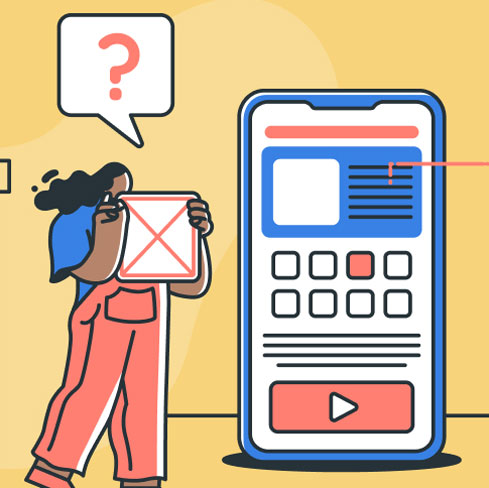Mastering the Art of Leading High-Performing UX Design Teams
May 22, 2023 | Read Time : 3 mins
Table of Contents
User Experience (UX) design is a critical component of creating successful digital products and services. To ensure the highest level of quality and innovation in UX design, effective management of UX design teams is essential. In this blog, we will explore key strategies and best practices for mastering the art of managing UX design teams.
Design Team Structure: Fostering cohesion and collaboration
Establishing an efficient and effective design team structure is essential for managing UX design teams successfully. Consider the following aspects:
a. Team Size and Composition: The size of the design team should be based on the scope and complexity of projects. Smaller teams may be suitable for agile projects with rapid iterations, while larger teams may be required for more extensive and long-term projects. Ensure the team composition includes a balance of skills and expertise to cover the various aspects of UX design.
b. Team Leadership: Appointing a strong and experienced team leader is crucial for driving the success of the design team. The team leader should possess a deep understanding of UX principles, have excellent communication and leadership skills, and be capable of guiding and motivating team members. They should provide clear direction, support, and mentorship to the team.
c. Cross-Functional Collaboration: Encourage cross-functional collaboration within the design team and with other departments such as product management, engineering, and marketing. Foster a collaborative environment where designers can work closely with developers, researchers, and stakeholders to ensure a holistic and integrated approach to product design.
d. Specialization and Generalization: Consider the balance between specialization and generalization within the team. Some team members may excel in specific areas of UX design, such as user research or interaction design, while others may have a broader skill set. Striking the right balance allows for deeper expertise in certain areas while ensuring flexibility and adaptability when needed.
e. Agile Methodologies: Consider adopting agile methodologies, such as Scrum or Kanban, to enhance the efficiency and productivity of the design team. Agile practices can help in managing priorities, maintaining transparency, and facilitating regular feedback and iteration cycles. This structure enables the team to respond quickly to changing project requirements and deliver value in a timely manner.
f. Collaboration Tools and Workflows: Utilize collaboration tools and establish streamlined workflows to facilitate effective teamwork. Project management platforms, design prototyping tools, version control systems, and communication platforms can enhance collaboration, streamline processes, and improve overall productivity.
g. Scalability and Flexibility: Design team structures should be scalable and adaptable to accommodate growth and changing project requirements. As the organization expands, consider how the design team structure can be adjusted to handle increased workload and incorporate new team members without compromising efficiency or quality.

Mastering the art of managing UX Design Teams
Building a successful UX design team starts with assembling the right individuals. Consider the following factors:
- Diverse Skill Sets: Look for a mix of skills, including UX research, interaction design, visual design, and prototyping.
- Collaborative Mindset: Seek team members who are open to collaboration, receptive to feedback, and eager to learn and grow.
- Culture Fit: Find individuals who align with the organization’s values, mission, and work ethic.
Clearly defining roles and responsibilities within the UX design team is crucial for effective management. Assign specific responsibilities to each team member, such as UX researcher, interaction designer, visual designer, or UX writer. This clarity will help streamline the workflow and prevent duplication of efforts.
Set clear goals and expectations for the UX design team. Clearly communicate project objectives, deadlines, and desired outcomes. By providing a clear direction, you empower the team to work towards common goals and ensure everyone is on the same page.
Strong collaboration and effective communication are vital for successful UX design teams. Foster an environment where team members feel comfortable sharing ideas, providing constructive feedback, and seeking help when needed. Regular team meetings, brainstorming sessions, and collaborative tools can facilitate open communication and encourage teamwork.
Equip your UX design team with the necessary resources and tools to excel in their work. Provide access to industry-standard software, design libraries, research tools, and training materials. Additionally, consider investing in continuous learning opportunities, such as workshops, conferences, or online courses, to keep the team updated with the latest trends and best practices in UX design.
A user-centric approach lies at the heart of UX design. Encourage your team to prioritize user research and testing throughout the design process. Foster empathy for end-users and ensure the team understands their needs, pain points, and preferences. Regularly involve users in usability testing sessions to gather valuable feedback and iterate designs accordingly.
Iteration is an integral part of the design process. Encourage your team to embrace iterative design and continuously improve their work based on user feedback and insights. Create a culture where constructive criticism is welcomed and viewed as an opportunity for growth. Regular design critiques and feedback sessions can help refine designs and promote a culture of continuous improvement.
Recognizing and rewarding the achievements of your UX design team is crucial for boosting morale and motivation. Celebrate milestones, successful launches, and exceptional performance. Acknowledge individual contributions and the collective effort of the team to create a positive work environment that encourages creativity and productivity.
Investing in the professional growth of your team members is vital for their long-term success and retention. Provide opportunities for skill development, mentorship programs, and career advancement. Encourage them to attend industry events, share knowledge internally, and contribute to the UX design community. By nurturing their growth, you create a team that constantly evolves and stays at the forefront of UX design.
Words of wisdom for aspiring creative leaders
Becoming a creative leader in the field of UX design is a fulfilling journey that requires continuous learning and growth. Stay updated with the latest design trends and industry best practices through workshops, conferences, and self-study. Cultivate a growth mindset, embracing failures as opportunities for learning and improvement, and encourage the same mindset within your team.
Effective communication is essential for leadership. Hone your skills in conveying ideas, giving and receiving feedback, and articulating your vision clearly. Lead by example, demonstrating passion for your craft, inspiring creativity, and setting high standards. Foster a positive and inclusive team culture, valuing diverse perspectives and creating an environment where everyone feels valued and empowered.
Recognize and nurture talent within your team, providing guidance, mentorship, and opportunities for growth. Practice empathy by understanding users’ needs and perspectives, advocating for user-centric design decisions, and conducting user research. Finally, prioritize a healthy work-life balance, encouraging your team members to prioritize self-care. By embodying these principles, you will inspire and guide your team to success in the ever-evolving field of UX design.
In conclusion, mastering the art of managing UX design teams necessitates effective leadership, clear communication, collaboration, and a user-centric approach.
Building the right team, defining roles, and establishing clear goals lays a solid foundation. The encouragement of collaboration, provision of resources, and embracement of iteration and feedback enhance team performance.
By adopting these strategies, the full potential of a UX design team can be unlocked, resulting in the creation of exceptional digital experiences.






